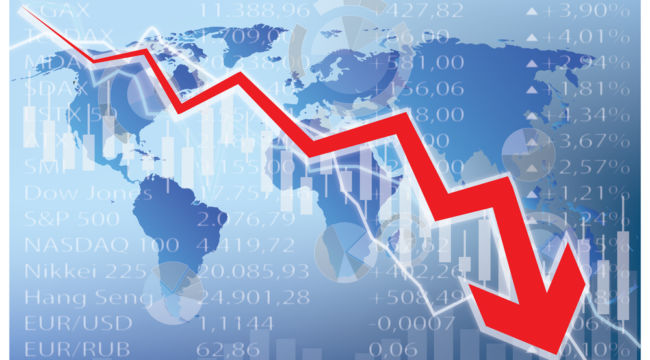Complex Systems Collide, Markets Crash
by Jim Rickards, Daily Reckoning:

At some point, systems flip from being complicated, which is a challenge to manage, to being complex. Complexity is more than a challenge because it opens the door to all kinds of unexpected crashes and events.
Their behavior cannot be reduced to their component parts. It’s as if they take on a life of their own.
Complexity theory has four main pillars. The first is the diversity of actors. You’ve got to account for all of the actors in the marketplace. When you consider the size of global markets, that number is obviously vast.
The second pillar is interconnectedness. Today’s world is massively interconnected through the internet, through social media and other forms of communications technology.
The third pillar of complexity theory is interaction. Markets interact on a massive scale. Trillions of dollars of financial transactions occur every single day.
The fourth pillar, and this is the hardest for people to understand, is adaptive behavior. Adaptive behavior just means that your behavior affects my behavior and my behavior affects yours. That in turn affects someone else’s behavior, and so on.
If you look out the window and see people bundled up in heavy jackets, for example, you’re probably not going to go out in a T-shirt. Applied to capital markets, adaptive behavior is sometimes called herding.
Assume you have a room with 100 people. If two people suddenly sprinted out of the room, most of the others probably wouldn’t make much of it. But if half the people in the room suddenly ran outside, the other half will probably do the same thing.
They might not know why the first 50 people left, but the second half will just assume something major has happened. That could be a fire or a bomb threat or something along these lines.
The key is to determine the tipping point that compels people to act. Two people fleeing isn’t enough. 50 certainly is. But, maybe 20 people leaving could trigger the panic. Or maybe the number is 30, or 40. You just can’t be sure. But the point is, 20 people out of 100 could trigger a chain reaction.
And that’s how easily a total collapse of the capital markets can be triggered.
Understanding the four main pillars of complexity gives you a window into the inner workings of markets in a way the Fed’s antiquated equilibrium models can’t. They let you see the world with better eyes.
People assume that if you had perfect knowledge of the economy, which nobody does, that you could conceivably plan an economy. You’d have all the information you needed to determine what should be produced and in what number.
But complexity theory says that even if you had that perfect knowledge, you still couldn’t predict financial and economic events. They can come seemingly out of nowhere.
For example, it was bright and sunny one day out in the eastern Atlantic in 2005. Then it suddenly got cloudy. The winds began to pick up. Then a hurricane formed. That hurricane went on to wipe out New Orleans a short time later.
I’m talking about Hurricane Katrina. You never could have predicted New Orleans would be struck on that bright sunny day. You could look back and track it afterwards. It would seem rational in hindsight. But on that sunny day in the eastern Atlantic, there was simply no way of predicting that New Orleans was going to be devastated.
Any number of variables could have diverted the storm at some point along the way. And they cannot be known in advance, no matter how much information you have initially.
Another example is the Fukushima nuclear incident in Japan a few years back. You had a number of complex systems coming together at once to produce a disaster.
Read More @ DailyReckoning.com
Loading...



